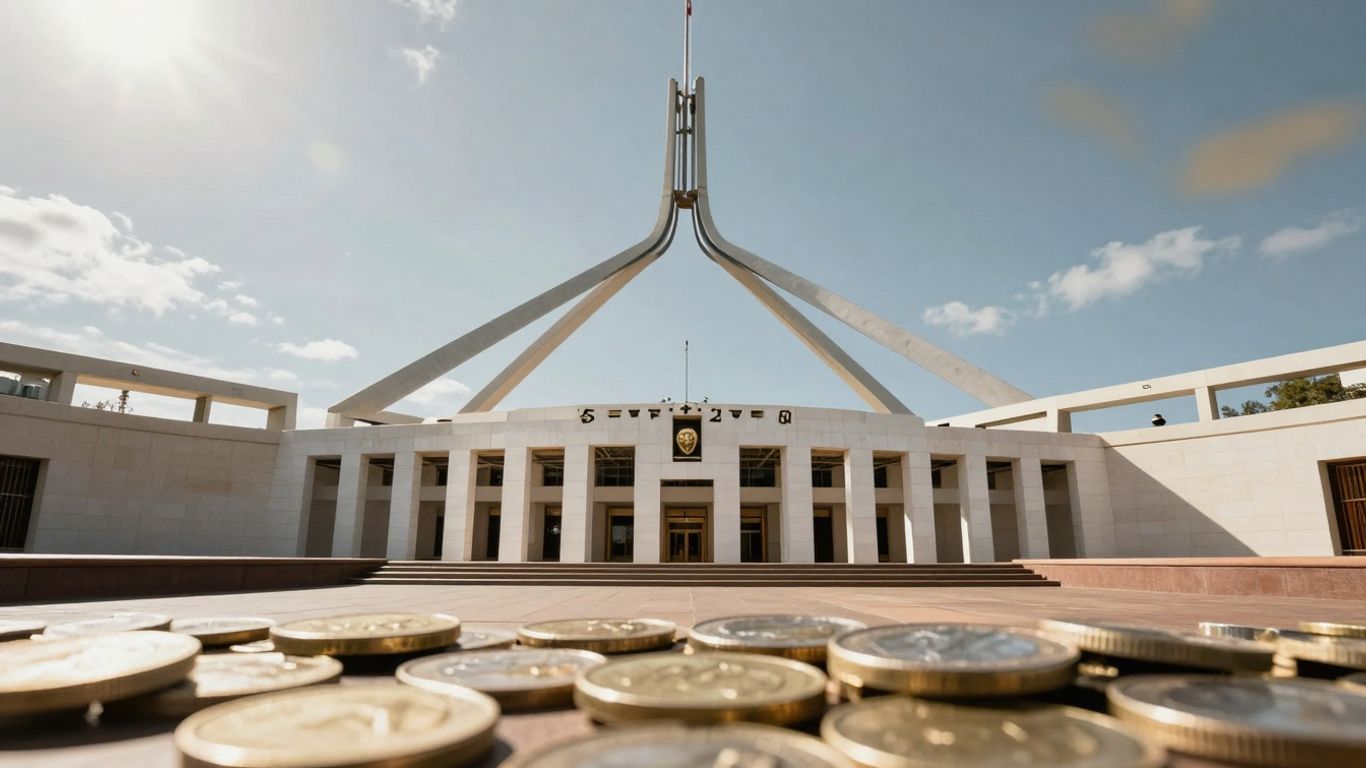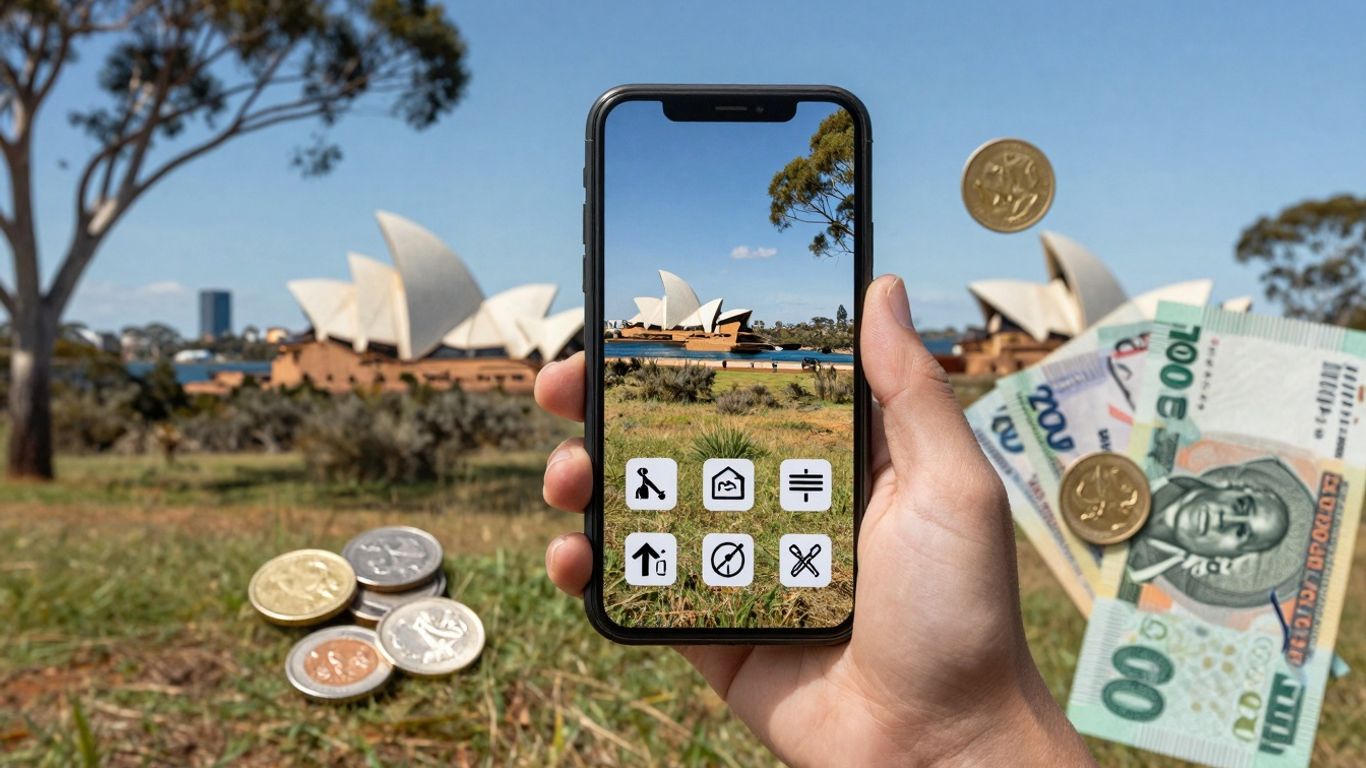Alright, let’s talk about getting your finances sorted. Budgeting can seem a bit daunting, like trying to assemble IKEA furniture without the instructions, but honestly, it’s not that bad once you get the hang of it. This guide is all about making those steps to budgeting clearer, so you can feel more in control of your money, whether you’re just starting out or looking to fine-tune things. We’ll break down how to set it all up, keep it going, and even handle those curveballs life throws at you.
Key Takeaways
- Figure out exactly how much money you have coming in after taxes.
- Track where every dollar is going, no matter how small the amount.
- Set aside money for unexpected costs, like car repairs or medical bills.
- Automate your savings and focus on paying off high-interest debts.
- Use budgeting apps or spreadsheets to keep your plan organised.
Getting Started with Budgeting

Getting your finances sorted can feel a bit daunting at first, but honestly, it’s not rocket science. It’s more about getting a clear picture of where your money’s actually going. Think of it like planning a road trip – you wouldn’t just jump in the car without knowing your destination or how much fuel you’ll need, right? Same deal with your cash.
Understanding Your Income
First things first, you need to know exactly how much money is coming in each month. This isn’t just your main job salary, though. You’ve got to factor in any side hustles, freelance gigs, or even that bit of interest from your savings account. It’s important to look at your net income – that’s the money you actually get in your bank account after taxes and other deductions. Don’t guess this figure; check your payslips or bank statements to be spot on.
Tracking Your Expenses
This is where the real eye-opener happens. You need to track every dollar you spend for a month or two. Seriously, everything. That morning coffee, the parking meter, the streaming service you barely use – it all adds up. You can use a notebook, a spreadsheet, or one of those handy budgeting apps. The goal is to see where your hard-earned cash is disappearing to.
Here’s a simple way to start:
- Daily: Jot down every purchase as it happens.
- Weekly: Review your spending and categorise it.
- Monthly: Tally up everything to see the big picture.
Distinguishing Fixed vs. Variable Costs
Once you’ve tracked your spending, you’ll notice some costs are pretty much the same every month, while others change. Fixed costs are your non-negotiables, like your rent or mortgage payment, loan repayments, and insurance premiums. Variable costs, on the other hand, are things like groceries, petrol, entertainment, and electricity bills – they can go up or down depending on your usage and choices.
Knowing the difference helps you see where you have flexibility to adjust your spending if needed. It’s not about cutting out everything fun, but about making informed decisions.
Creating Your Budget Plan
Right then, you’ve got a decent idea of what’s coming in and what’s going out. Now it’s time to actually put pen to paper, or fingers to keyboard, and build your budget plan. It sounds a bit daunting, but honestly, it’s just about making conscious decisions about your money.
The 50/30/20 Rule Explained
This is a pretty popular way to get started, and it’s not too complicated. Basically, you split your after-tax income into three buckets: 50% for needs, 30% for wants, and 20% for savings and debt repayment. So, your rent, bills, and groceries would fall into the ‘needs’ category. Things like going out for dinner, that new gadget you’ve been eyeing, or your Netflix subscription are ‘wants’. And the 20%? That’s for building up your emergency fund, paying down credit cards, or saving for a holiday.
Managing Essential Expenses
When you’re looking at your needs, make sure you’re not cutting corners on the really important stuff. We’re talking about your housing, your utilities, food, and getting to work. It’s better to be realistic here. If you consistently underestimate how much you need for these, your budget will fall apart before it even gets going. Think about your regular bills – electricity, water, phone – and make sure you’ve got enough set aside for them each month. It’s a good idea to check out budgeting resources to see how others manage these costs.
Allocating Funds for Wants
This is where you get to have a bit of fun, but you still need to be smart about it. Once your essentials are covered and you’ve put aside your savings and debt repayment money, you can decide how to spend the rest on things you enjoy. Maybe you want to go to the movies more often, or perhaps you’re saving up for a new surfboard. The key is to decide what’s most important to you within this ‘wants’ category and allocate your funds accordingly. It’s all about balance, really. You don’t want to miss out on life, but you also don’t want your ‘wants’ to derail your financial goals.
Handling the Unexpected
Life throws curveballs, doesn’t it? One minute you’re cruising along, the next your washing machine decides to pack it in, or maybe the car needs a surprise service. These aren’t everyday costs, but they can really mess with your budget if you’re not ready. That’s where planning for the unexpected comes in. It’s about building a bit of a buffer so these things don’t send you into a tailspin.
Preparing for Irregular Expenses
Think about those bills that don’t come every month. Things like annual car registration, insurance premiums, or even Christmas presents. If you just wait for them to pop up, you’ll be scrambling. A good way to handle this is to figure out the yearly cost and then divide it by 12. Put that amount aside each month into a separate savings account. It’s like a mini-sinking fund for those specific irregular costs. For example, if your car insurance is $1200 a year, aim to save $100 each month for it.
Building Your Emergency Fund
This is your ultimate safety net. Ideally, you want enough saved to cover three to six months of your essential living expenses. If you’ve got a family or a less stable income, aiming for more is a smart move. Treat contributions to this fund like any other bill – make it a regular part of your budget. Keep this money separate from your everyday accounts, maybe in a high-interest savings account, so it’s accessible but not too tempting for impulse buys. Building it up can feel slow at first, but consistent saving really adds up. This fund is your go-to for genuine emergencies, like a job loss or a major health issue. You can find some great strategies for managing household expenses in Australia for 2025 here.
Cutting Unnecessary Costs
Sometimes, the best way to prepare for the unexpected is to free up cash. Have a good look at where your money is actually going. Are there subscriptions you barely use? Maybe you’re spending more on takeaway coffees than you realised? Even small, regular expenses can drain your account over time. Identifying and cutting back on these non-essential costs can free up money that can then be funnelled into your emergency fund or used to cover those irregular bills. It’s about being honest with yourself about what truly adds value to your life and what’s just… there.
It’s not about deprivation; it’s about making conscious choices with your money so you’re not caught out when life happens.
Building Savings and Managing Debt
Right, so you’ve got your budget sorted, and you’re feeling pretty good about it. Now, let’s talk about actually growing your money and getting rid of any pesky debt hanging around. It’s not just about spending less; it’s about making your money work for you.
Automating Your Savings
Seriously, this is a game-changer. If you can, set up automatic transfers from your everyday account to your savings account. Do it right after payday. You won’t even miss it, and before you know it, you’ll have a nice little nest egg building up. Think about what you want to save for – a holiday, a new car, or just that rainy day fund. Having a clear goal makes it easier to stick with it. You can explore different types of savings accounts, like those offering better interest rates, to make your money grow even faster.
Prioritising High-Interest Debt
Got credit cards or personal loans with high interest rates? These can really eat into your finances. The best approach is to tackle them head-on. Figure out which debt has the highest interest rate and focus on paying that off first. Once it’s gone, move to the next highest. This is often called the ‘debt avalanche’ method. It might feel slow at first, but over time, you’ll save a heap on interest payments. It’s a smart way to manage your money and get debt-free faster. For those new to Australia, understanding the local financial landscape is crucial. Budgeting is a key tool for managing expenses, saving, and preventing debt. Various resources, including budgeting apps and financial planners, are available to assist individuals in navigating their finances effectively in Australia.
Exploring Investment Options
Once you’ve got a handle on your savings and debt, it’s time to think about making your money work harder. Investing might sound a bit scary, but it doesn’t have to be complicated. Start by learning the basics of different investment types, like shares or managed funds. Understand that all investments come with some level of risk, but they also offer the potential for growth over the long term. Even small, regular investments can add up significantly over time, thanks to the magic of compounding. It’s about making your money grow beyond just what you earn from your job.
Preparing for Major Life Events
Life throws curveballs, doesn’t it? Big changes like getting married, starting a family, or even planning for when you stop working can really shake up your finances. It’s not just about having enough cash for the day-to-day; it’s about making sure your budget can handle these major shifts. Thinking ahead means you can actually enjoy these big moments without stressing about the bills.
Joint Budgeting for Couples
When you tie the knot, your money often does too. It’s a good idea to sit down with your partner and have an open chat about your finances. What are your individual spending habits? What are your shared goals? Figuring out how to combine your incomes and expenses is key. You might want to set up a joint account for bills and shared expenses, while keeping separate accounts for personal spending money. This way, you both have a bit of freedom without losing track of the household budget.
Budgeting for Growing Families
Babies and kids add a whole new layer to budgeting. Suddenly, you’ve got nappies, formula, clothes that they grow out of in a blink, and childcare costs to consider. It’s worth looking at your current budget and seeing where you can trim back to make room for these new expenses. Think about bulk buying where it makes sense, or looking for second-hand options for things like prams and cots. Planning for these costs early can save a lot of stress down the track.
Planning for Retirement
Retirement might seem ages away, but the sooner you start thinking about it, the better. It’s not just about having enough to live on; it’s about maintaining a lifestyle you’re happy with. This means looking at your superannuation, any other investments you have, and how much you’ll realistically need each year. Creating a retirement budget helps you see if you’re on track and what adjustments you might need to make now. A solid plan for your money in retirement is a big step towards a comfortable future.
Avoiding Common Budgeting Mistakes
Even the most organised folks can stumble when it comes to managing their money. It’s easy to get caught out if you’re not careful. Being aware of these common slip-ups can save you a lot of grief and keep your budget on track.
Overestimating Your Take-Home Pay
This is a big one. People often budget based on their gross income – that’s the amount before taxes, superannuation, and any other deductions come out. What you actually have to spend is your net income, the money that lands in your bank account. Always use your take-home pay as the basis for your budget. It’s better to be realistic from the start than to find yourself short later in the month.
Ignoring Small, Regular Expenses
Those daily coffees, the occasional online purchase, or that streaming service you barely use – they all add up. It’s easy to overlook these small, regular expenses because they don’t seem like much individually. However, when you tally them up over a month or a year, they can represent a significant chunk of your income. Tracking every single dollar, no matter how small, is key to understanding where your money is truly going.
Failing to Plan for the Unexpected
Life throws curveballs, and your budget needs to be ready for them. Car repairs, unexpected medical bills, or even a sudden need to replace a household appliance can derail your finances if you haven’t prepared. This is where having a solid emergency fund comes into play. Aim to set aside a portion of your income regularly to build this safety net. It means when these unforeseen events happen, you can cover them without resorting to credit cards or sacrificing other important financial goals. It’s about building resilience into your financial plan.
A good rule of thumb is to have at least three to six months’ worth of living expenses saved in an easily accessible account.
Staying Motivated and Consistent
Sticking to a budget can feel like a marathon, not a sprint. It’s easy to get fired up at the start, but keeping that momentum going, especially when life throws curveballs, is where the real challenge lies. Think of it like trying to get fit; you wouldn’t expect to run a marathon on day one. Budgeting’s the same – it’s about building habits and staying on track over time.
Setting Achievable Milestones
Big financial goals are great, but breaking them down into smaller, manageable steps makes them feel way less daunting. Instead of just ‘save $10,000’, try ‘save $200 this month’ or ‘reduce my takeaway coffee spending by $50 this week’. Hitting these smaller targets gives you a real sense of accomplishment and keeps you motivated. It’s like ticking off boxes on a to-do list – satisfying stuff!
Rewarding Your Progress
Don’t forget to celebrate the wins, no matter how small. Reached your monthly savings goal? Treat yourself to something nice – maybe a new book, a decent meal out, or a movie night. These little rewards act as positive reinforcement, reminding you why you’re putting in the effort. Just make sure the reward fits within your budget, otherwise, you’ll be undoing your hard work!
Teaching Budgeting to Others
Want to really cement your own budgeting skills? Try explaining them to someone else. Whether it’s helping your kids understand where money comes from, creating a shared budget with your partner, or just chatting with mates about saving tips, teaching reinforces your own knowledge. Explaining concepts like the 50:30:20 rule to others forces you to be clear and organised, which can highlight any gaps in your own understanding or plan. Plus, you might just help someone else out too.
Using the Right Tools

Picking the right tools can really make a difference when you’re trying to get your finances in order. It’s not about having the fanciest software, but finding what actually works for you and what you’ll stick with. Think of it like choosing a comfy pair of shoes – if they pinch, you won’t wear them for long, right? The same goes for budgeting.
Budgeting Apps for Convenience
These days, there are heaps of apps designed to help you track your spending and stick to your budget. They can link up to your bank accounts, automatically categorise your expenses, and give you a clear picture of where your money is going. Some even send you alerts if you’re getting close to overspending in a certain area. It’s like having a little financial assistant in your pocket. For those looking for popular options in Australia, checking out budgeting and savings apps in Australia can give you a good starting point. Many offer free trials, so you can test them out before committing.
Spreadsheets for Customisation
If you’re more of a hands-on person or like to have things set up exactly how you want them, a spreadsheet might be your go-to. You can build your own budget from scratch or use a template. This gives you total control over your categories, how you track things, and how you visualise your progress. It takes a bit more effort upfront, but for some, that control is exactly what they need to feel on top of their money.
Financial Planning Software
For a more in-depth look at your finances, especially if you have more complex financial situations like investments or multiple income streams, dedicated financial planning software can be a good option. These programs often go beyond basic budgeting and can help you plan for long-term goals like retirement, manage investments, and get a holistic view of your financial health. They can be a bit more of an investment, both in terms of cost and learning curve, but they offer a lot of power for serious money management.
So, What’s Next?
Alright, so we’ve gone through the ins and outs of getting your budget sorted here in Oz. It’s not always a walk in the park, and yeah, sometimes it feels like you’re just chasing your tail. But honestly, once you get a handle on where your cash is actually going, it makes a massive difference. Remember, a budget is just a plan, and like any plan, it works best when you actually stick to it. Keep an eye on those expenses, don’t be afraid to tweak things as you go, and before you know it, you’ll be feeling a lot more in control of your money. Give it a red hot go!
Frequently Asked Questions
How do I get started with making a budget?
Start by figuring out exactly how much money you get each month after taxes. Then, write down everything you spend money on. It helps to split your spending into ‘needs’ (like rent and food) and ‘wants’ (like going to the movies).
What’s a simple way to plan my budget?
A popular way is the 50/30/20 rule. This means you spend 50% of your money on essentials, 30% on things you want, and save or pay off debt with the other 20%. You can also make your own rules that work for you.
How do I handle surprise costs with my budget?
It’s smart to set aside a bit of money each month for things that don’t happen often, like yearly car registration or a doctor’s visit. Also, build up an emergency fund for really unexpected stuff, like if your washing machine breaks.
How can I save more money and pay off my debts faster?
Try to save automatically by having a bit of money moved from your bank account to your savings account each payday. If you have debts, try to pay off the ones with the highest interest rate first, as this saves you money in the long run.
How does my budget change for big life events like marriage or kids?
When big things happen, like getting married or having kids, you need to talk about money with your partner. You’ll need to adjust your budget to cover new costs like childcare or saving for your kids’ future. Don’t forget to plan for when you stop working, too!
What are some common mistakes people make when budgeting?
Common mistakes include thinking you earn more than you do after tax, or forgetting about small daily expenses like your morning coffee. It’s also easy to forget to save for unexpected things. Tracking everything helps avoid these traps.





